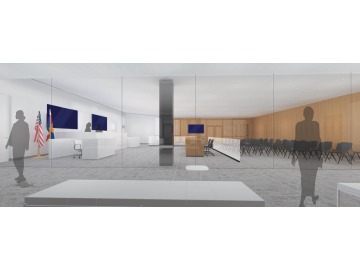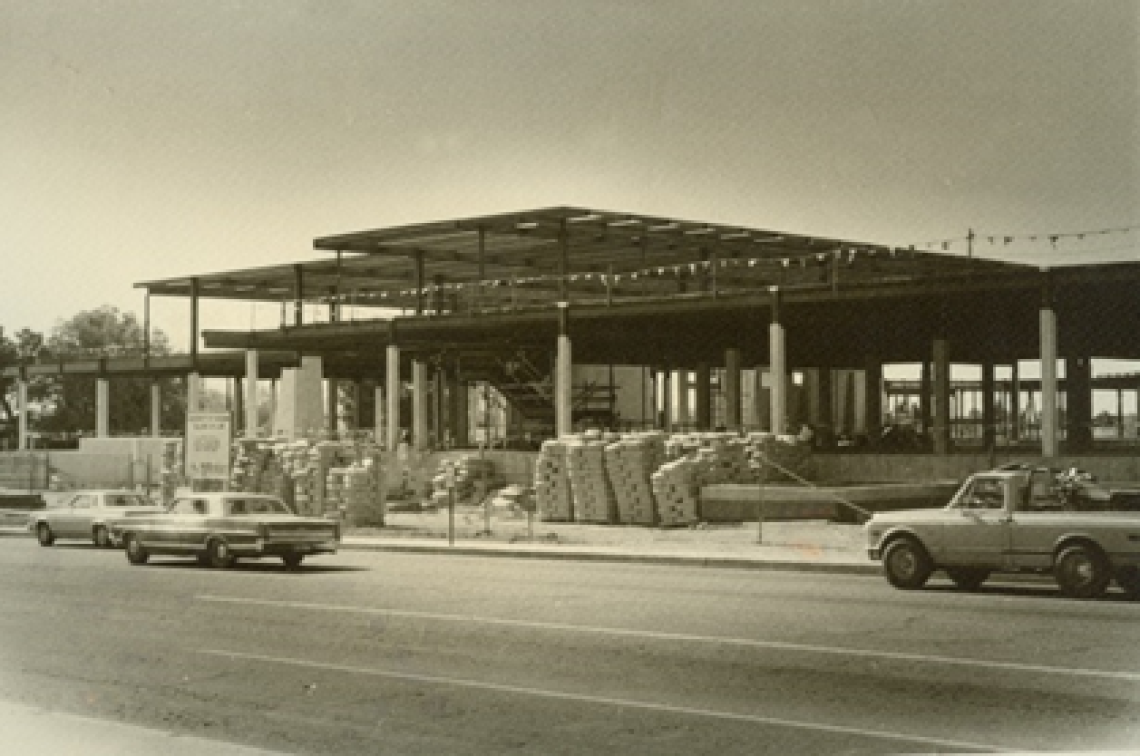
A History of
FIRSTS
The First Law Program in Arizona
As Arizona’s first law school, we have more than 100 years of success in educating lawyers and thought leaders throughout the state, country and beyond.
1915
Professional instruction in law was started at the University of Arizona in September 1915. A night course in business law had been offered to Tucson residents as early as 1911, and University of Arizona President Arthur H. Wilde recommended that it be expanded into a full law program. His recommendation was not seriously considered until 1914. In the enthusiasm generated by recently achieved statehood, a definitive program was formulated for the following year.
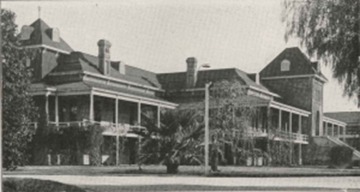
1918
The first class to graduate from the law program at the University of Arizona was made up of twin brothers from Yuma, Harry Westover and William Westover. Harry later became a California district court judge and William a Yuma attorney.
1921
Lucy Stanton Huff became the first woman to graduate from the law program at University of Arizona.
1925
The College of Law was officially formed and in the same year saw Lorna Lockwood become the first woman to graduate from the newly created college. During her law school career, Lockwood served on the Law Student Body, first as Secretary in 1924 and then as President in 1925. She later became the first woman in the nation to serve as a state Supreme Court justice when she was elected Chief Justice of the Arizona Supreme Court in 1965. Unlike many other law schools, University of Arizona Law has always accepted women as students.
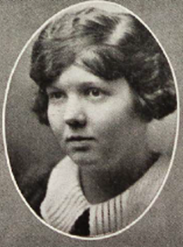
1929
From its founding in 1915 until 1929, the law program had no building of its own. Its classes, faculty, and library were accommodated from time to time by agriculture, the main college library, Old Main, and Herring Hall. In later years, Dean Fegtly recalled with amusement the chilly winter mornings in Herring Hall when the students crowded to the sunny side of the classroom, and part of the teacher’s role was to stoke the stove. During the summer of 1929, the former University of Arizona library building -- known as the Douglass Building -- was remodeled for the College of Law. Except for the addition of a stackroom wing in 1948, the building served the College well without major change for thirty years.
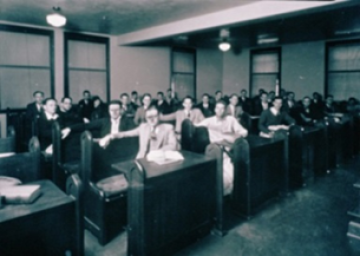
1932
The College of Law was accredited and admitted to membership in the American Association of Law Schools.
1939
The Fegtly Moot Court Competition began, named in honor of former dean Samuel M. Fegtly.

1949
A tremendous year for diversity at University of Arizona Law. In that year, Hayzel B. Daniels became the first African-American graduate of the College of Law. Daniels was also the first African American to be admitted to the State Bar and, in 1950, was one of the first two African Americans to be elected to the Arizona legislature. During his lengthy career in Phoenix, Daniels sponsored legislation and litigated cases to reduce segregation in Arizona's public schools. In 1965, he was the first African American to be appointed judge in Arizona. In 2012, Daniels was posthumously recognized with a Lifetime Achievement Award by the College of Law. Also in 1949, Raul H. Castro graduated from the college, would later go on to become the first Latino Governor of Arizona.
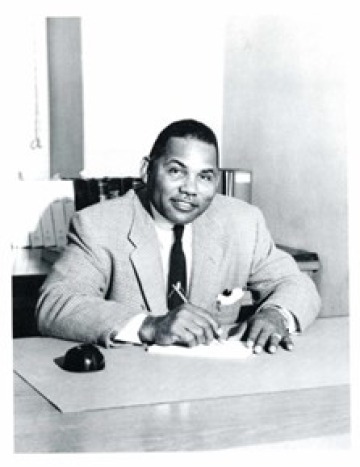
1953
C. Lawrence Huerta, member of the Pascua Yaqui Tribe of Arizona, became the first Native American to graduate from the College of Law. He later served as a judge, Chancellor of the Navajo Community College (now Diné College), and achieved several federal benefits for the Pascua Yaqui Tribe. In 2014, as a tribute to his lifetime of leadership to University of Arizona Law and to the legal community, the Huerta Scholarship was created thanks to an originating gift of $25,000 from the Pascua Yaqui Tribe. In the eight years since its creation the scholarship program has provided financial support to 37 Native students attending University of Arizona Law and helped to increase the overall number of Native students attending law school and Native Lawyers practicing law.
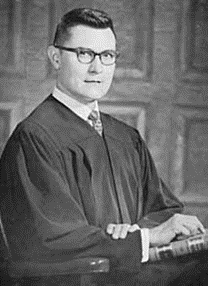
1959
The first issue of the Arizona Law Review was published in the spring of 1959, with articles contributed by Claude H. Brown, Jack J. Rappeport, and Lawrence Davis. The first editorial board included Lawrence W. Galligan, Steven B. Duke, Alfred J. Pfister, Teddy F Warner, J. William Moore, Robert W. Finn, Jerry L. Angle, Robert A. Petrie. Faculty Advisors were Assoc. Professors John J. Irwin Jr., Robert G. Beshears, and John R. Christian. By 1969, the Arizona Law Review was publishing four issues per year and has been going strong ever since.

1961
On January 4, 1961, the College of Law moved into the Franklin Building, designed specifically to house the law program. It was built and equipped at a cost of $870,000, and was planned to meet the needs of the College for five years. Five years later, the enrollment of the College of Law and the holdings of the law library had expanded to fill the capacity of the building.
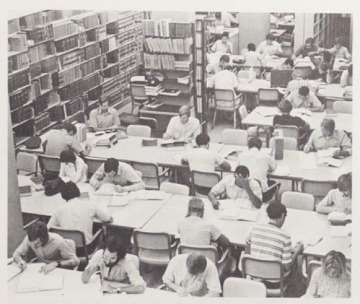
1966
In 1966, Charles Ares, a 1951 graduate, returned to the College of Law as Dean. He quickly determined that the Law College needed to add teaching positions. So, in 1966-67, he headed a large recruitment of new faculty including Andrew Silverman, Arthur W. Andrews, August Eckhardt, Boris Kozolchyk, Daniel O’Connell, David Wexler, James Graham, Joel Finer, Junius Hoffman, Kenney Hegland, Luther McDougal, William Boyd, and Winton D. Woods.
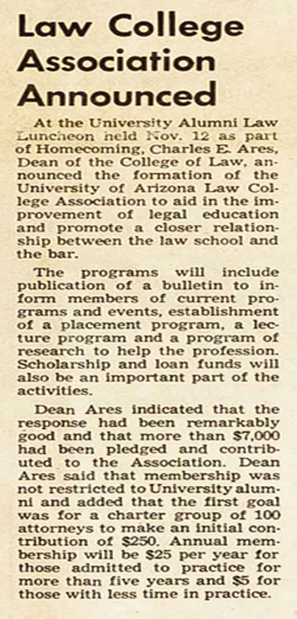
1974
Mary Doyle became the first woman law professor at the College of Law in 1974. She earned tenure in 1978. Professor Doyle earned her JD from Boston College in 1966 and her LL.B. from Columbia in 1968. She noted that she received tremendous support from the faculty, but some challenges from the 95% male student body. She led a distinguished career and eventually became Associate Dean for Academic Affairs in 1984.
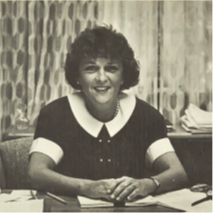
1979
In May of this year the College moved into its new and current home on Speedway and Mountain. Associate Justice John Paul Stevens of the U.S. Supreme Court delivered the dedication address a few months later on September 8, 1979.
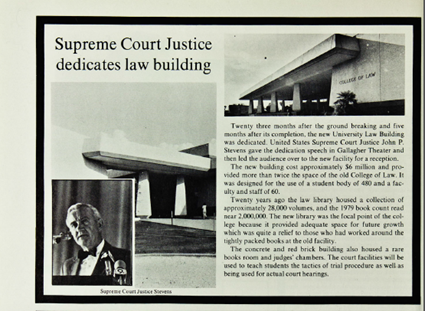
1984
The Journal of International and Comparative Law was established. The Journal continues to this day, publishing articles on a wide variety of international and comparative law topics in order to provide a forum for debate on current issues affecting international legal development including international and comparative law issues and tribal/indigenous peoples law.
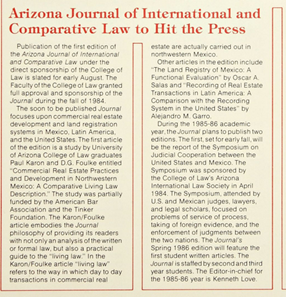
1994
The first LLM program in free trade was offered at University of Arizona Law.
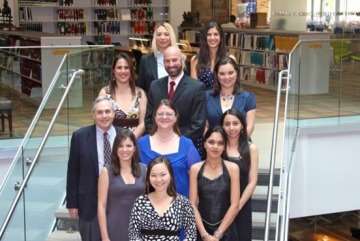
1999
The College was officially renamed the James E. Rogers College of Law thanks in part to a transformative gift from alumnus James E. Rogers ('62). That same year, Toni Massaro became the first woman Dean of University of Arizona Law.
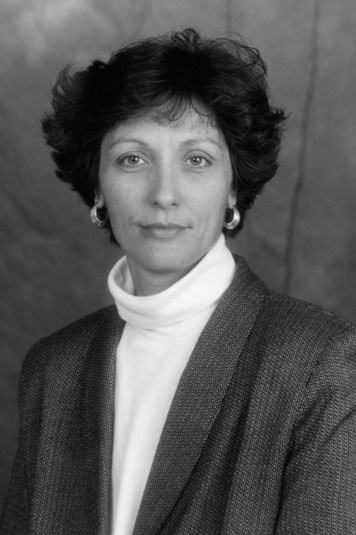
2014
University of Arizona Law established the first-of-its-kind Bachelor of Arts in Law program in collaboration with the University of Arizona College of Social and Behavioral Science's School of Government and Public Policy.
2016
University of Arizona Law became the first school in the country to accept GRE scores for JD admissions and led a sweeping change in legal education. The GRE is now an acceptable and valid test for admissions at all law schools.
2021
University of Arizona Law became the only law school in Arizona to offer three different education pathways towards gaining Legal Paraprofessional licensure. The creation of this new tier of legal professionals by the Arizona Supreme Court came in response to a state-wide need to improve access to justice.
2023
The College will break ground on A New Day in Court this December, kicking off one of the largest renovation projects since the Law Commons in 2007.
